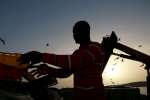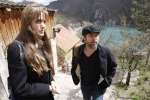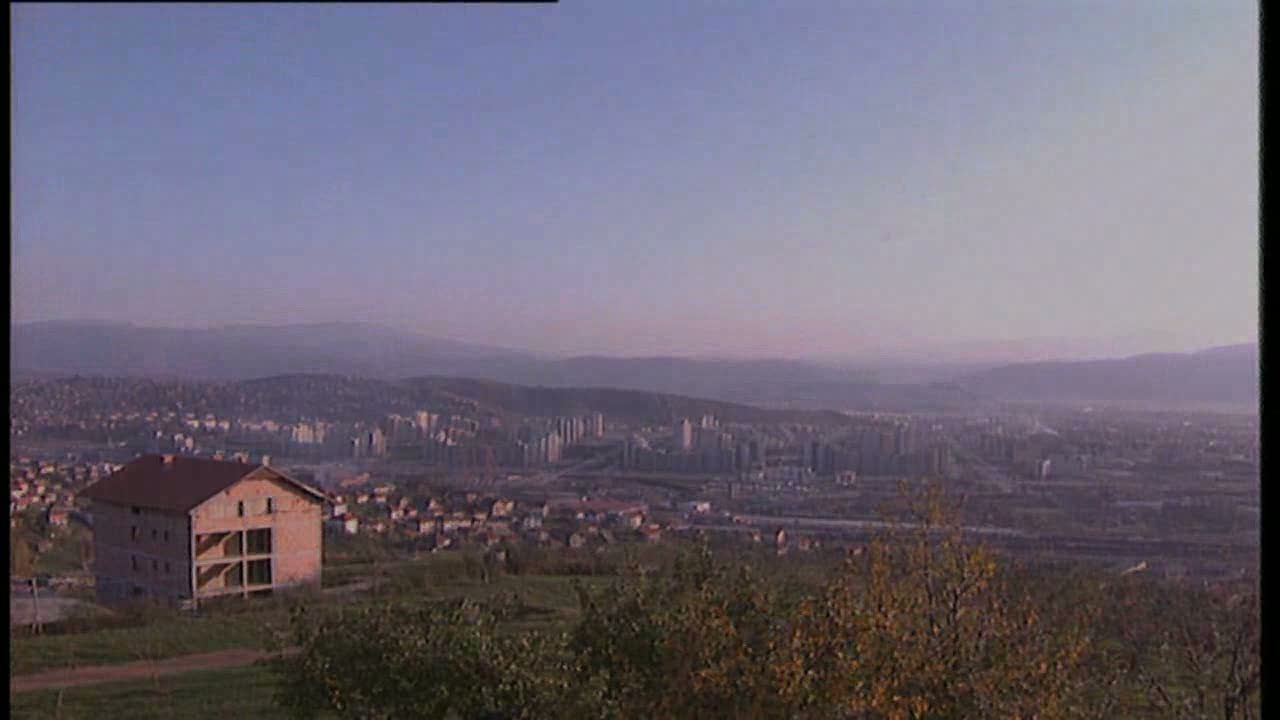Refugees Magazine Issue 104 (UNHCR's World) - Bosnia-Herzegovina: Breaking down the barriers
Refugees Magazine, 1 June 1996
Protection Officer Anna Nylander spends long days trying to negotiate exchange visits aimed at mending Bosnia's tattered multi-ethnic fabric.
By Anna Nylander
UNHCR Protection Officer – Banja Luka, Bosnia-Herzegovina
Anna Nylander, who is Swedish, has been working since February as a protection officer in Banja Luka, the second largest of the eight UNHCR offices in Bosnia-Herzegovina.
All of her time has been spent trying to negotiate visits by displaced Muslims to their homes here in the Bosnian Serb Republic, and by displaced Serbs to their homes in the Bosnian Federation. It's a frustrating job. Nine out of 10 visits requested are either refused or aborted because of last-minute security concerns.
At 8 a.m., Anna is in the office, checks her messages, attends the morning staff meeting and departs for the field. She drives the white UNHCR Nissan Patrol vehicle herself. She is accompanied by her assistant, Momir, who works as her interpreter during the difficult negotiations. Young Momir is a refugee himself. He fled from Knin in Croatia in August last year when that area was taken by the Croatian army.
Anna and Momir are on their way to Sipovo, 90 minutes south of Banja Luka. There they will have a meeting with the mayor about an upcoming visit to the town by displaced Muslims. Sipovo is in the so-called "Anvil," an area which was severely destroyed by the Bosnian Croat forces before it was handed back to the Bosnian Serb Republic.
In Sipovo, Anna meets up with her colleague, Aurvasi, a UNHCR protection officer from the Zenica office. She is coordinating the upcoming visit to Sipovo from the Federation side, where the former residents of Sipovo now live as displaced persons.
At 10:15, they are greeted by the mayor of Sipovo with small talk, coffee and plum brandy. They all have countless hours of negotiations behind them. Two successful visits by Muslims to Sipovo have already been arranged, and now a third is being discussed.
The mayor, a pleasant doctor in his mid-thirties, asks Aurvasi to send his greetings to his former colleagues in Zenica, whom he still considers his friends. But when the negotiations start, the mayor is transformed into a tough negotiator. After two hours, he finally agrees to the planned visit. As usual, he invites the UNHCR delegation for lunch, and as usual they politely decline because of their tight schedule. After leaving the mayor's office, Aurvasi returns to Zenica.
Anna and Momir leave Sipovo at 12:45, going back the same way they came. Halfway between Sipovo and the town of Mrkonjic Grad, they stop in a Muslim village, one of the few in the Serb entity where the inhabitants stayed on unharmed during the whole war. Anna and Momir pay a visit to one of the families to check if everything is in order in the village. As always, the small living room quickly fills up with friendly villagers. Coffee and brandy are served, and the visitors have a hard time extracting themselves.
At 3 p.m., they arrive at the mayor's office in Mrkonjic Grad, where Anna wants to set the date for a future meeting. The recently married mayor is in a very good mood and tries to bring out the plum brandy. Anna quickly but courteously declines. Her next meeting is with the local IPTF (U.N. International Police) commander about the planned Muslim visit to Sipovo. Then she goes to the IFOR (NATO-led Implementation Force) compound to pick up the mail. There she meets a displaced Serb from Bugojno who has come to IFOR with his problems. He does not want to return to his home town, which is in the Federation, and asks about the prospects of resettling in another country. Anna listens to him and tells him to come to our office in Banja Luka. However, she knows that the possibilities for this man to get refugee status are very slim indeed.
It is now 5 p.m. Apart from a few bananas, Anna and Momir have not had any lunch. They still have a tiring drive ahead of them. They arrive back at the office at 6 p.m. Anna still has to write her daily report, which she finishes at 7:30 p.m. At home, she cooks a pasta dinner for herself, reads some papers she has not had time for during the day, and tries to relax in front of the TV. By 10:30 p.m. she is in bed. Early tomorrow she will start another exhausting but interesting day in Banja Luka.
Source: Refugees Magazine Issue 104 (1996)



















































